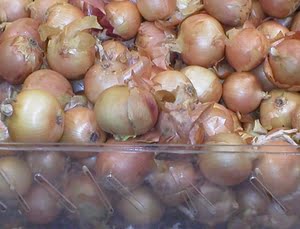The kitchen garden of yesteryear is making its comeback. You have probably kicked around the idea of vegetable gardening yourself a time or two. In fact, you might have tried setting up your own vegetable gardens already but met with failure, brown leaves and odd insects. Growing tomatoes, onions, garlic and peas does not have to be reserved for container vegetable gardening mavens and urban green thumbs. With a bit of attention paid to the initial vegetable garden layout you, too, can join the ranks of bumper crop harvesting hobbyists.
Plotting the Gardening Plot
Sunlight is absolutely necessary to produce healthy high-quality vegetables,” the University of Illinois cautions. In the past I have overlooked the amount of competition nearby shrubs provide to small vegetable plants. When the bell peppers failed to thrive, only a quick transplant to another area of the yard could save them. Sadly, this realization came too late for the Japanese eggplants. Learn from my mistake and spend a bit of time observing your vegetable garden layout. Where do the shadows fall at noon, three o’clock and at 6 p.m.? If there is more shadow than sunshine, rethink your vegetable garden location.
Making a Blueprint and Checking it Twice
You now know where you best vegetable garden spots are. Is it time to run to the local big box home improvement store and buy your top soil, mulch, seeds, shovels and soaker hoses? No! You still need a garden blueprint. A mix between a calendar and a map, this portion of the vegetable garden layout allows you to maximize harvests with crop rotations and by timing different crop plantings just right.
- Rotate crops. For example, a fall crop of carrots could be planted right after you finish your spring pea harvest. Do not plant the same crop repeatedly in the same plot of soil.
- Time it right for a spring and fall harvest. Know the types of vegetables that will yield a quick harvest after planting. Know those that take a while to grow and develop before they can be harvested. Spend some time reading the backs of seed packages to get a fair understanding of the time frames you need to mind from seed to harvest.
- Start seedlings early. If you can start your vegetable plants inside before transplanting them to the vegetable gardens, you can get a jump on things. All others might want to invest in small plants for sale at the nursery when it comes time to break ground.
Using the Right Tools
Unless you are committed to container vegetable gardening, you need to have some tools. Soaker hoses are perfect for the gentle wetting of the soil that prevents harm to weak root systems. Rakes keep the soil level and debris out of vegetable gardens. Stakes and florist wire train up tomato plants and beans.
Another valuable tool is the notebook. Keep track of the types of seeds or plants you add to your vegetable garden. Note the varieties you choose and the brands of the seed packets. After a couple of crops, you will notice that some varieties do better in your yard than others. Rather than augmenting the soil to placate more finicky plants, work with what you have whenever possible.
More Gardening Tips by Sylvia Cochran
- Giving the Patio Container Garden a Makeover
- How to Plant Peas for a Sweet Bumper Crop Harvest
- Designing a Thanksgiving Garden




